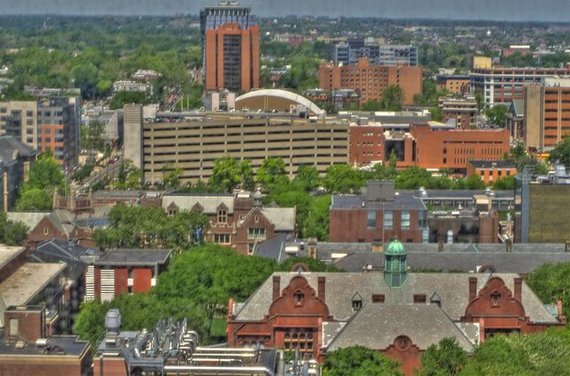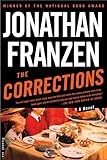
 A few days ago, during my weekly visit to the comic book store, I stopped at the dense graphic-novel shelves, tyrannized by choice. Before me sat row upon row of the laughably misleading (The Essential Dazzler), the highly unnecessary (ElfQuest: Volume 14), and the already-read (Essex County). After a minute of unfocused browsing, I arrived at a chunk of Punishers. Thanks to a 2009 alt-weekly story, I’d recalled that The Punisher’s Six Hours To Kill was set in Philadelphia, where I live. I picked it up and flipped on through, remembering why I hadn’t read The Punisher since I was 13: it was really kind of dumb.
A few days ago, during my weekly visit to the comic book store, I stopped at the dense graphic-novel shelves, tyrannized by choice. Before me sat row upon row of the laughably misleading (The Essential Dazzler), the highly unnecessary (ElfQuest: Volume 14), and the already-read (Essex County). After a minute of unfocused browsing, I arrived at a chunk of Punishers. Thanks to a 2009 alt-weekly story, I’d recalled that The Punisher’s Six Hours To Kill was set in Philadelphia, where I live. I picked it up and flipped on through, remembering why I hadn’t read The Punisher since I was 13: it was really kind of dumb.
Still, I’d come closer to buying the book than I reasonably should have—and the only reason for that was its setting. Eighteen years had passed since I’d given Frank Castle any thought—eighteen years in which he’d killed his way through Queens, Detroit, and Nome. Yet all it had taken to rekindle my interest was for him to hop in his van and roar down the Turnpike. Had I read Six Hours To Kill, I might’ve recognized a street, a park, or a building—and that would’ve drawn me in. Whether in comics, films, or novels, this verisimilitude is a gift—recognition that you actually exist.
 In 1995, Steve Lopez debuted with Third and Indiana, named after an intersection in Philly’s crumbling Badlands. The book was mediocre—its villain was a cartoon, its heroes whimpering saints—but its street details were compelling. “An old man with a white mustache and a newsboy hat cooked ribs and chicken on the sidewalk in a barbecue fashioned from a black metal drum.” “Kensington Avenue… sat in eternal darkness and gloom under the El, and the tracks were supported by an archway of rusted iron crablegs, a symbol of the city’s industrial death.”
In 1995, Steve Lopez debuted with Third and Indiana, named after an intersection in Philly’s crumbling Badlands. The book was mediocre—its villain was a cartoon, its heroes whimpering saints—but its street details were compelling. “An old man with a white mustache and a newsboy hat cooked ribs and chicken on the sidewalk in a barbecue fashioned from a black metal drum.” “Kensington Avenue… sat in eternal darkness and gloom under the El, and the tracks were supported by an archway of rusted iron crablegs, a symbol of the city’s industrial death.”
 In Pete Dexter’s Brotherly Love, gangsters and union guys battle it out on similarly gritty streets: “Michael sees them too late, one on the sidewalk, one on the street. He takes the pistol out of his coat pocket, beginning to run, and shoots four times, blowing out the front window of a poultry store kitty-corner in the Italian Market.” I live two blocks from the Market, and when I walk through with my wife, I’ll point towards Ninth and Catherine. “In Brotherly Love, there was a shootout right over there,” I’ll say. My hope, perhaps, is that she’ll find me somehow tougher—after all, I witnessed a goddamn shooting. Instead, she’ll ask, “Wait—this was in a book? So it didn’t actually… happen?” “No, not really,” I’ll mumble. But… I could’ve sworn…
In Pete Dexter’s Brotherly Love, gangsters and union guys battle it out on similarly gritty streets: “Michael sees them too late, one on the sidewalk, one on the street. He takes the pistol out of his coat pocket, beginning to run, and shoots four times, blowing out the front window of a poultry store kitty-corner in the Italian Market.” I live two blocks from the Market, and when I walk through with my wife, I’ll point towards Ninth and Catherine. “In Brotherly Love, there was a shootout right over there,” I’ll say. My hope, perhaps, is that she’ll find me somehow tougher—after all, I witnessed a goddamn shooting. Instead, she’ll ask, “Wait—this was in a book? So it didn’t actually… happen?” “No, not really,” I’ll mumble. But… I could’ve sworn…

 Such split thinking speaks, of course, to the vitality of narrative, to how it tricks us towards belief. But unlike camping with the Joads or mourning poor Piggy, reading about one’s hometown doesn’t transport so much as extend, enlarging our maps with each page. I’ve spent time in nearby Germantown thanks to David Goodis’ Black Friday: “He was very careful about it as he walked along Morton Street, watching the doors, the porch posts, the brick walls underneath the porch.” When Point Breeze makes the paper, I’ve been there through The Corrections: “Friable houses with bedsheet curtains. Expanses of fresh asphalt that seemed to seal the neighborhood’s fate more than promise renewal.”
Such split thinking speaks, of course, to the vitality of narrative, to how it tricks us towards belief. But unlike camping with the Joads or mourning poor Piggy, reading about one’s hometown doesn’t transport so much as extend, enlarging our maps with each page. I’ve spent time in nearby Germantown thanks to David Goodis’ Black Friday: “He was very careful about it as he walked along Morton Street, watching the doors, the porch posts, the brick walls underneath the porch.” When Point Breeze makes the paper, I’ve been there through The Corrections: “Friable houses with bedsheet curtains. Expanses of fresh asphalt that seemed to seal the neighborhood’s fate more than promise renewal.”
Until I wrote this piece, I hadn’t seen the thread that runs through my Philly reading: I focus on areas that I’d otherwise never enter; on things I’d rather not see. Like a Baltimorean watching The Wire, I experience the nearby underbelly without having to actually experience it. This might make me an earnest investigator or an entitled cultural sightseer; probably a mixture of both. But whatever my motive, I’m not nearly as interested in the places I already know. Were there a Philadelphia novel about a Bella Vista freelancer, I’d probably have to skip it. I spend enough time with myself.
In a recent issue of Superman, The Man of Steel began a cross-country walk in West Philadelphia. As with The Punisher, his visit made the news—but this time, much of it harped on errors. For one, Superman trekked through “The South Side”—a term used in Chicago, but never Philadelphia. And at a diner, he ordered a “Philly cheese steak sandwich,” as natural-sounding as a Bulgarian weekender. Such details, while seemingly petty, are crucial to hometown readers. We might be too busy, or nervous, or lazy to go out and explore what surrounds us—but if you’re the author, by God, you’d better get it right. Because we’ll take your stories as journalism; they’ll shape our thoughts for years. We may or may not be tourists, but you are surely our guide.
(Image: west philly, from lisacee’s photostream)








